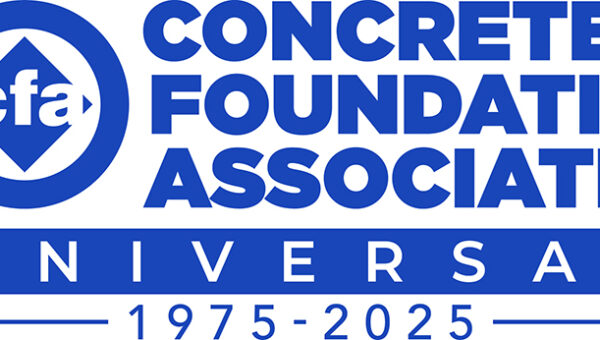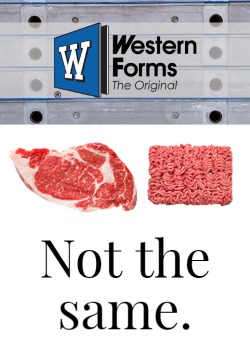A publication of the Concrete Foundations Association
Concrete Facts Magazine Online
Feature
Magazine Issues
Spread the Word
This year’s Annual Winter Meeting is going to be just what we are looking for, a low-key night in a fun atmosphere with three hours to eat, drink, and talk concrete. The Hofbräuhaus Las Vegas is a great German restaurant with a unique atmosphere, tasty German beer (and soft drinks) and traditional style food. We […]
ACI Publishes 332 Standard
IT FINALLY HAPPENED! The long-awaited 332 Standard, the first accepted consensus document for residential concrete, was approved by the Board Standards of the American Concrete Institute. Several CFA members have worked towards this goal for over ten years. Buck Bartley, Barry Herbert, Ron Colvin, and Brent Anderson are to be congratulated for their input and […]
THANK YOU
It was in September 2000 the CFA kicked off this study with funds coming from the Research and Education Fund. The initial tests were done at Bowser-Morner testing Labs in Dayton Ohio, on materials graciously provided by Henry Ernst and Dick Hoying of Piqua Concrete Co., Piqua, Ohio. After this initial test, our studies sort […]
CFA Cold Weather Research Transitions to Contractors
Jim Baty, CFA Technical Director “You can feel it in the air, you can feel it on the breeze…” isn’t that how the song goes? For many contractors throughout the middle to upper states, cold weather is not only on the horizon, it is approaching rapidly. What better time for the CFA to finish production […]
CFA Standard Updated
The CFA published the “2003 CFA Standard” in late 2002. It was our first attempt to present a wide variety of foundation construction information and minimum standards in a “code format” for use by our members, yet it goes well beyond the basic code approach. The Standard established a base-line for construction. It followed the […]
The Tropics Call Contractor to Build Concrete Homes
By Wendy Shannon & Libbie Hough of Shannon & Company, a marketing communications firm for the Concrete Homes Council. K-Wall Poured Walls, Inc. is located in Traverse City, Michigan and has been in operation for the last 11 years. Kubica is the owner and president of K-Wall and is a man who loves to challenge […]
Subcontractor Agreements – What Does This Mean to Subcontractors?
Doug Staebler, Custom Concrete Company, Inc., Westfield, IN Over the past year, there has been a marked increase in the use of subcontractor agreements in residential construction. Although these agreements were used for years in commercial construction, residential contractors often operated on handshake agreements. Like it or not, those days are probably gone for good, […]
Building Officials Announce Change in Pressure Treated Lumber Materials
Ohio, as well as other states, recently warned residents and the building industry to be aware of the lumber, anchors, and fasteners used on their construction projects. The preservative-treated lumber used for the last 60 years was deemed unusable because it contains arsenic. It was replaced with a new preservative-treated lumber that contains a chemical […]
Subcontractors, Beware! Your Assumptions Can Cost You
One of the most dangerous words in the English language for subcontractors is “assume.” For example, do you assume that your company will be reimbursed for costs incurred as a result of project delays caused by another subcontractor on a project or by the general contractor? If the subcontract document doesn’t say it and the […]
Why all Poured Wall Contractors Should be Members
The CFA is a great group of men and women who are dedicated to the advancement of foundation contractors and the industry in which we work. Some are just starting up companies, while others have been around for years, some member companies are huge while others are very small, some appear tremendously organized and experienced, […]
Building Codes – We can make a difference.
The CFA has been involved in the development of building codes for nearly ten years, beginning with its effort to add input to the ACI Residential Code. The CFA has also been a participant in the ACCS, the Alliance for Concrete Codes and Standards, a group of allied associations that meets biannually to review and […]
Change in Lumber Affects Contractors
New preservative treated lumber requires new fasteners, bolts and anchors for most building applications. Ohio, as well as other states, recently warned residents and the building industry to be aware of the lumber, anchors, and fasteners used on their construction projects. The preservative-treated lumber used for the last 60 years was deemed unusable because it contains […]











